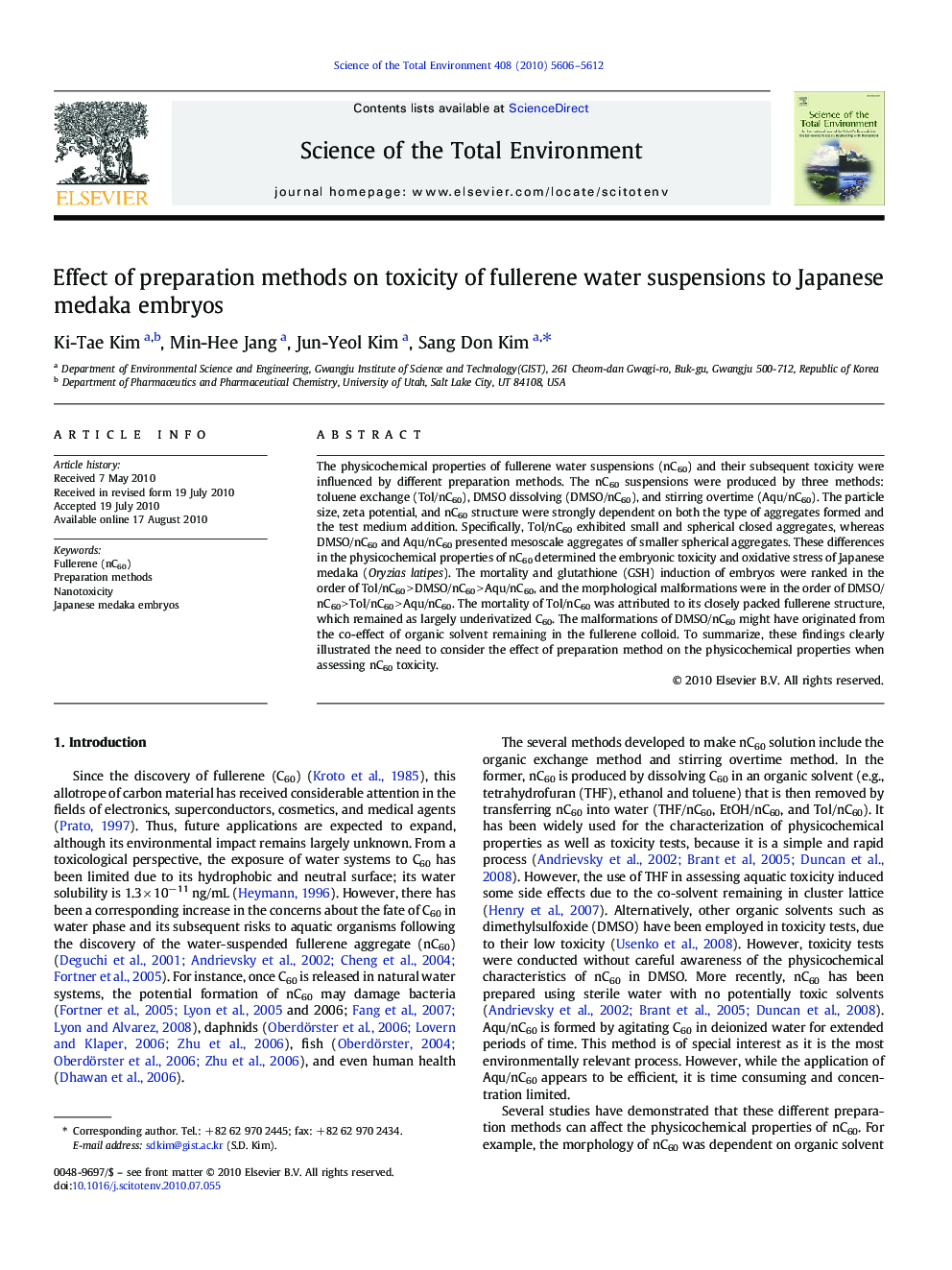| کد مقاله | کد نشریه | سال انتشار | مقاله انگلیسی | نسخه تمام متن |
|---|---|---|---|---|
| 4431541 | 1619864 | 2010 | 7 صفحه PDF | دانلود رایگان |

The physicochemical properties of fullerene water suspensions (nC60) and their subsequent toxicity were influenced by different preparation methods. The nC60 suspensions were produced by three methods: toluene exchange (Tol/nC60), DMSO dissolving (DMSO/nC60), and stirring overtime (Aqu/nC60). The particle size, zeta potential, and nC60 structure were strongly dependent on both the type of aggregates formed and the test medium addition. Specifically, Tol/nC60 exhibited small and spherical closed aggregates, whereas DMSO/nC60 and Aqu/nC60 presented mesoscale aggregates of smaller spherical aggregates. These differences in the physicochemical properties of nC60 determined the embryonic toxicity and oxidative stress of Japanese medaka (Oryzias latipes). The mortality and glutathione (GSH) induction of embryos were ranked in the order of Tol/nC60 > DMSO/nC60 > Aqu/nC60, and the morphological malformations were in the order of DMSO/nC60 > Tol/nC60 > Aqu/nC60. The mortality of Tol/nC60 was attributed to its closely packed fullerene structure, which remained as largely underivatized C60. The malformations of DMSO/nC60 might have originated from the co-effect of organic solvent remaining in the fullerene colloid. To summarize, these findings clearly illustrated the need to consider the effect of preparation method on the physicochemical properties when assessing nC60 toxicity.
Journal: Science of The Total Environment - Volume 408, Issue 22, 15 October 2010, Pages 5606–5612